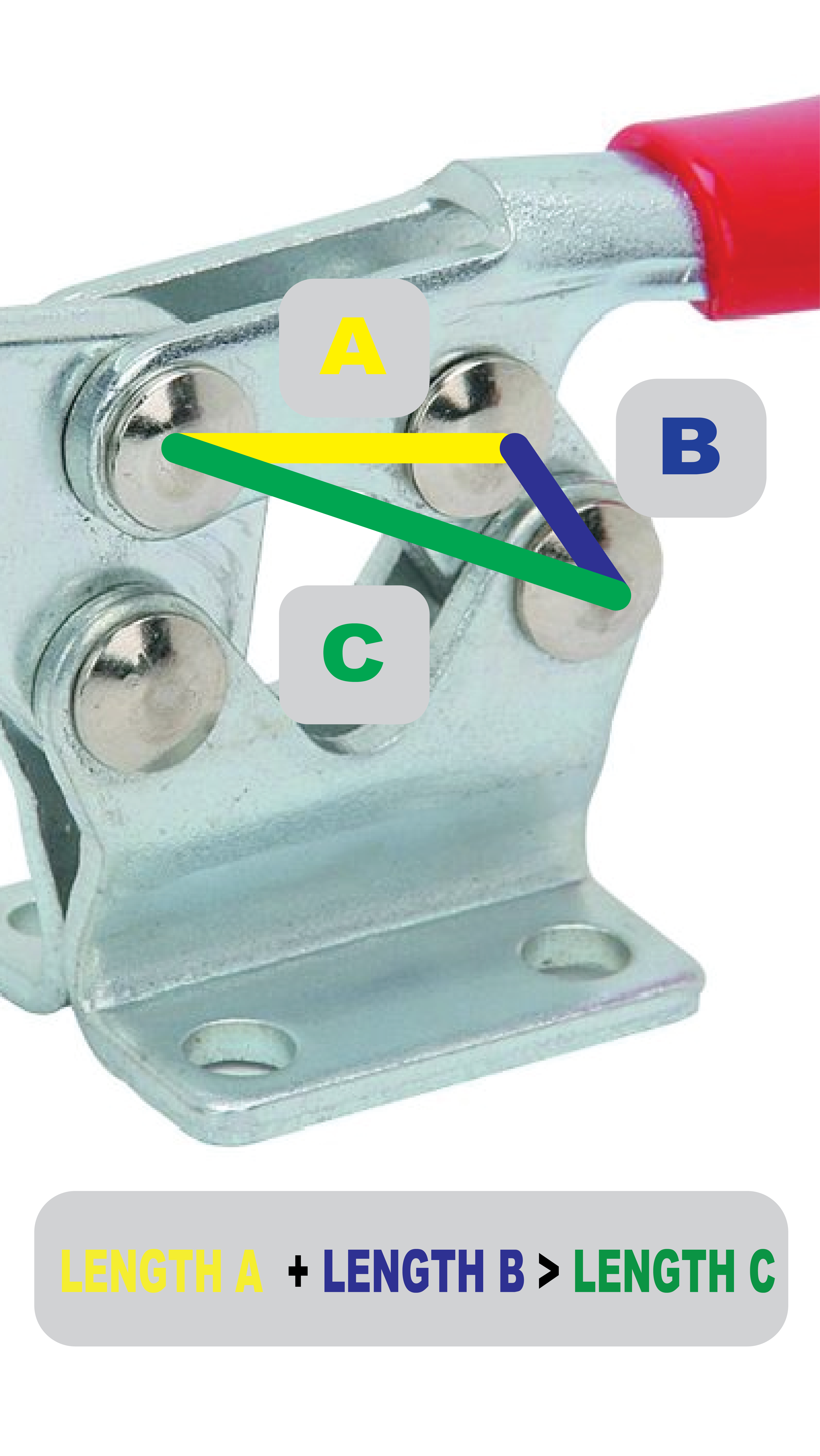❇️ Bessey STC-HH70 Auto-Adjust Toggle Clamp → https://amzn.to/49bJl3k
❇️ Traditional Toggle Clamp → https://amzn.to/3UddRpz
Traditional toggle clamps work based on the "over center" principle. Linkages A and B are longer than the distance between the two endpoints, C. The clamp is locked in place by forcing the middle pivot over the center of line C. The resulting tension in the system keeps everything in place.
The problem is that the endpoint connecting lines C and A is attached to the clamping arm, which is moveable. This means that line C could be longer than lines A and B. If so, there is no tension in the system and no clamping force at the end of the pivot arm. So the clamping arm must be elevated high enough so that line C is shorter than the length of lines A and B, but not so short that it becomes impossible to engage the clamp. We make sure the clamping arm is at the correct elevation by adjusting the screw attached to the clamping arm. And this is a giant pain in the rear!
Auto-adjust clamps contain all the same basic components as traditional toggle clamps. But they also feature a movable cartridge at the rear. This cartridge locks in place when a certain amount of tension is present in the system of linkages. This allows line C to be just the right length to match any height of the clamping arm. So it no longer becomes necessary to run the clamping screw in and out to accommodate different workpiece thicknesses.


This post contains links connected to my Amazon Associates account. I may receive a small commission at no additional cost to the consumer.
